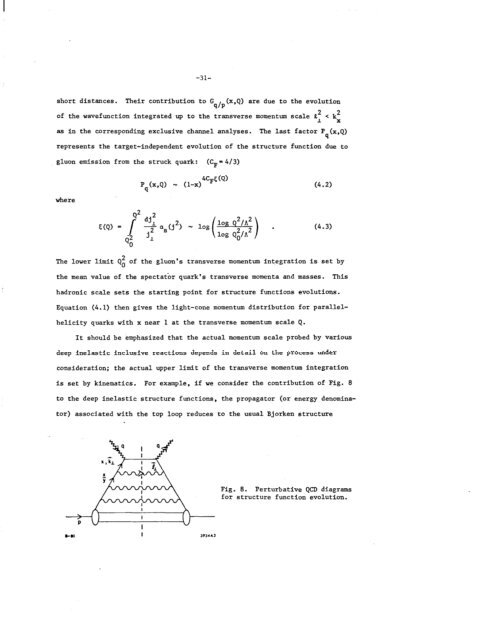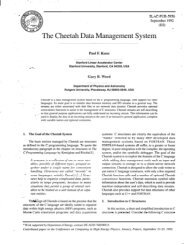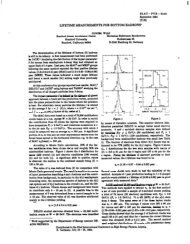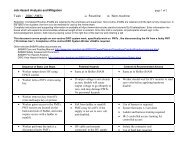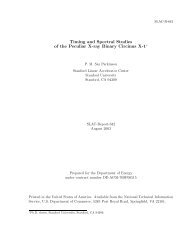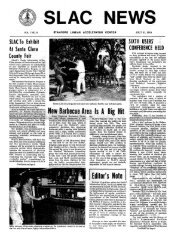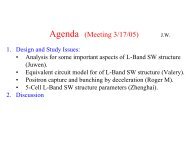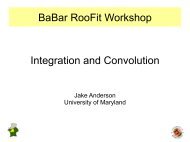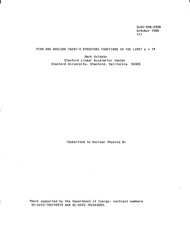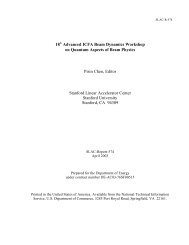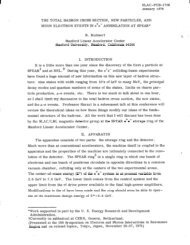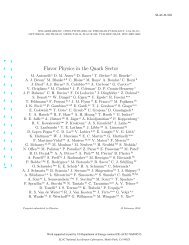slac-pub-2605 - SLAC - Stanford University
slac-pub-2605 - SLAC - Stanford University
slac-pub-2605 - SLAC - Stanford University
Create successful ePaper yourself
Turn your PDF publications into a flip-book with our unique Google optimized e-Paper software.
-31-<br />
short distances. Their contribution to G ,,,kQ)<br />
are due to the evolution<br />
of the wavefunction integrated up to the transverse momentum scale J!f c k2<br />
X<br />
as in the corresponding exclusive channel analyses. The last factor Pq(x,Q)<br />
represents the target-independent evolution of the structure function due to<br />
gluon emission from the struck quark: (C= 4/3)<br />
where<br />
Pq(x,Q)<br />
_ (1-x)4CFE(Q)<br />
Q2 dj2<br />
E(Q) = J -$ as(j2) (4.3)<br />
9; JL<br />
The lower limit Qi of the gluon's transverse momentum integration is set by<br />
the mean value of the spectator quark's transverse momenta and masses. This<br />
hadronic scale sets the starting point for structure functions evolutions.<br />
Equation (4.1) then gives the light-cone momentum distribution for parallel-<br />
helicity quarks with x near 1 at the transverse momentum scale Q.<br />
It should be emphasized that the actual momentum scale probed by various<br />
deep inelastic inclusive reactions depends in detail on the process under<br />
consideration; the actual upper limit of the transverse momentum integration<br />
is set by kinematics. For example, if we consider the contribution of Fig. 8<br />
to the deep inelastic structure functions, the propagator (or energy denomina-<br />
tor) associated with the top loop reduces to the usual Bjorken structure<br />
Fig. 8. Perturbative QGD diagrams<br />
for structure function evolution.


